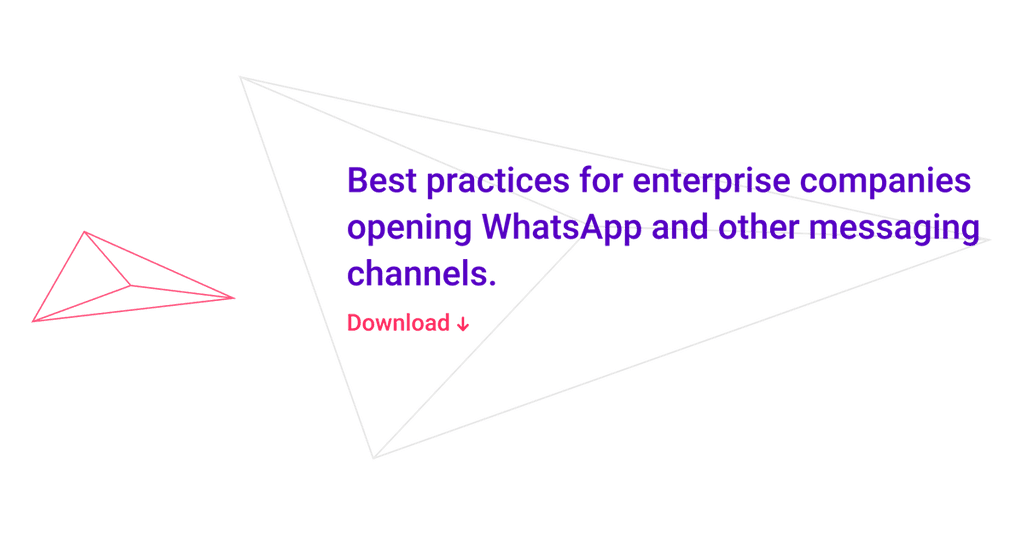Chatbot technology is elevating customer service experiences and reducing costs across different industries. Chatbots provide fast and accurate information to customers and free up human agents for higher-value work. But, to build a successful chatbot it’s important to understand chatbot best practices.
Let’s explore which chatbot is right for your business, and some tips that will set you up for success.
Before getting started with chatbot development
First, it’s important to understand the different components of a chatbot. Let’s look at the main elements of a chatbot:
- Plain text
- Interactive elements such as carousels, buttons, and lists
- Webviews, or the little websites that pop up in a user-friendly format during the chatbot conversation
Next, let’s clarify the two main types of chatbots:
Rule-based chatbots
Rule-based chatbots can only respond to specific commands. In other words, these chatbots follow a guided conversational flow based on a decision tree. Usually, the chatbot offers buttons for easy replies. Some are also able to answer questions based on keywords.
The rules defined can be very simple or very complex. The most common type of rule-based chatbot uses a document retrieval system and is limited in its capabilities.
This type of chatbot is not efficient in answering free-form questions, where the pattern might not match with the rules by which it is trained. It is also known as a decision tree chatbot, where the branches represent the options that the user has available.
Artificial Intelligence (AI) enabled chatbots
AI chatbots can learn from the interactions they have with the end-users. This is made possible, in part, through Natural Language Processing (NLP). NLP allows chatbots to intelligently respond to a user’s text input by understanding intent and context. When building AI, it’s important to regularly test and improve technology.
How to build a bot with chatbot best practices
Define what can be automated
When it comes to what can be automated, Pareto’s law usually applies. Pareto’s law says that 80% of effects come from 20% of causes. In regard to chatbots, this means that 80% of your customer support ticket volume likely comes from 20% of your FAQs. First, understand your audience and categorize the 20% of inquiries that drive the largest volume support tickets.
Create a process for what can’t be automated
The remaining 20% of FAQs usually represent more challenging or complex support tickets. We recommend creating a process for a seamless handover to a human agent. As you gather more data, you can start to identify more FAQs and hone the abilities of your chatbot. Think about what you can do to automate the low-value tasks to free up your human agents for higher-value, more rewarding conversations.
Define the user flow
This step is essential in building a successful chatbot. One of the common chatbot best practices is to start small. We recommend building a ruled-based chatbot and then later building in AI and NLP capabilities.
This means that you need to start with a decision tree with all the use cases (or FAQs) you want to automate. This will serve as a road map for conversations.
Choose tone and personality
Finally, a successful chatbot needs a personality. According to chatbot best practices, giving your chatbot a voice makes it more engaging. Focus on your target audience. How can you create a chatbot that relates to your customers?
Giving a tone and personality to your chatbot is an essential phase of the process.
But, don’t go overboard. Creating a chatbot that is too “friendly” runs the risk of being annoying.
Selecting a partner to build a successful chatbot
Thankfully, there are platforms like Hubtype that know the ins and outs of chatbot best practices. Many enterprise companies choose Hubtype to efficiently build conversational interfaces.
Using Hubtype’s framework you’ll be able to:
- Save time and money
- Easily build a great conversational experience
- Scale effectively over multiple channels and languages
- Iterate and improve your chatbot



